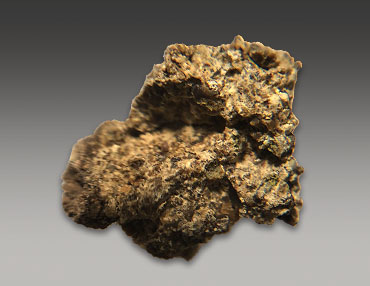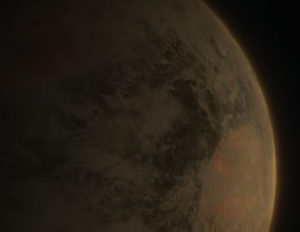
Cretaceous/Paleogene Boundary Fragment
Haiti
66 MYA.
Paleontologists have questioned why the dinosaurs became extinct so suddenly. One hypothesis was that a terrible virus crossed the continents of Pangaea and left none surviving. Others surmised that, like the Great Dying 185 million years before, worldwide volcanic eruptions was the cause. However, the research done by physicist Luis Alvarez, his son, geologist  Walter Alvarez and chemists Frank Asaro and Helen Michel have opened the door to a mass extinction due to a city-sized asteroid colliding with Earth.
Walter Alvarez and chemists Frank Asaro and Helen Michel have opened the door to a mass extinction due to a city-sized asteroid colliding with Earth.
They determined this from an extinction boundary composed of a layer of sediment that was high in the element iridium. Iridium is rare on the Earth’s surface, but high in asteroids and meteorites. The fact that this layer appears all over the Earth is another sign of a worldwide event. This collision caused the Earth’s atmosphere to fill with dust that blocked out sunlight, causing about 75% of plant life, herbivores and subsequently carnivorous creatures to die out.
Research indicates the asteroid impact occurred near the coast of Yucatan, Mexico which left an oval-shaped depression 110 miles wide. This depression is called the Chicxulub Crater.
The blanket of sediment occurs in rock formations between the Cretaceous and Paleogene periods. Therefore, the name given to this residue is the K-Pg boundary, where K is the traditional abbreviation for Cretaceous.
The sample of the K-Pg boundary obtained by the museum is from Haiti, which was close to the impact point. It was acquired from New England Meteoritical Services of Mendon, Massachusetts.